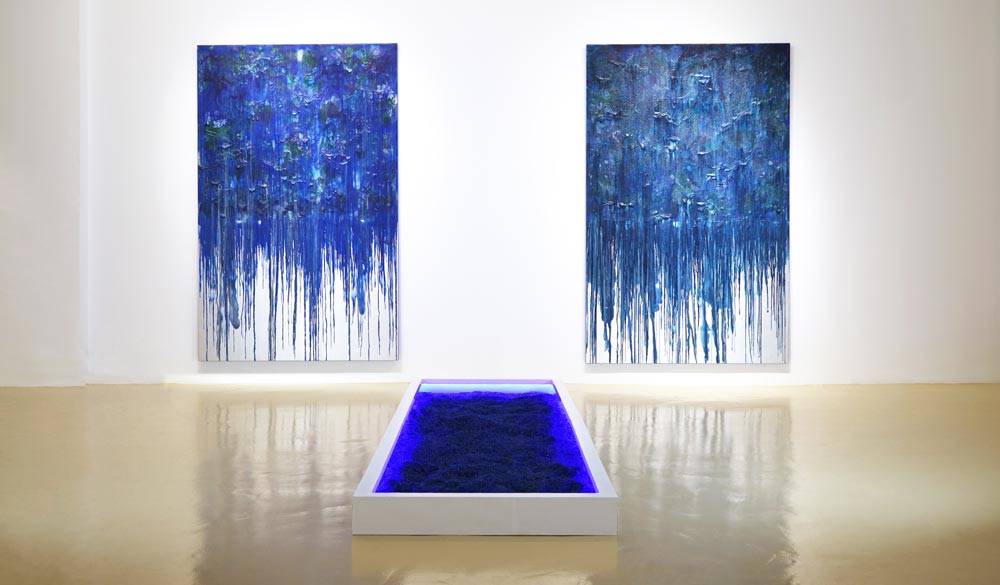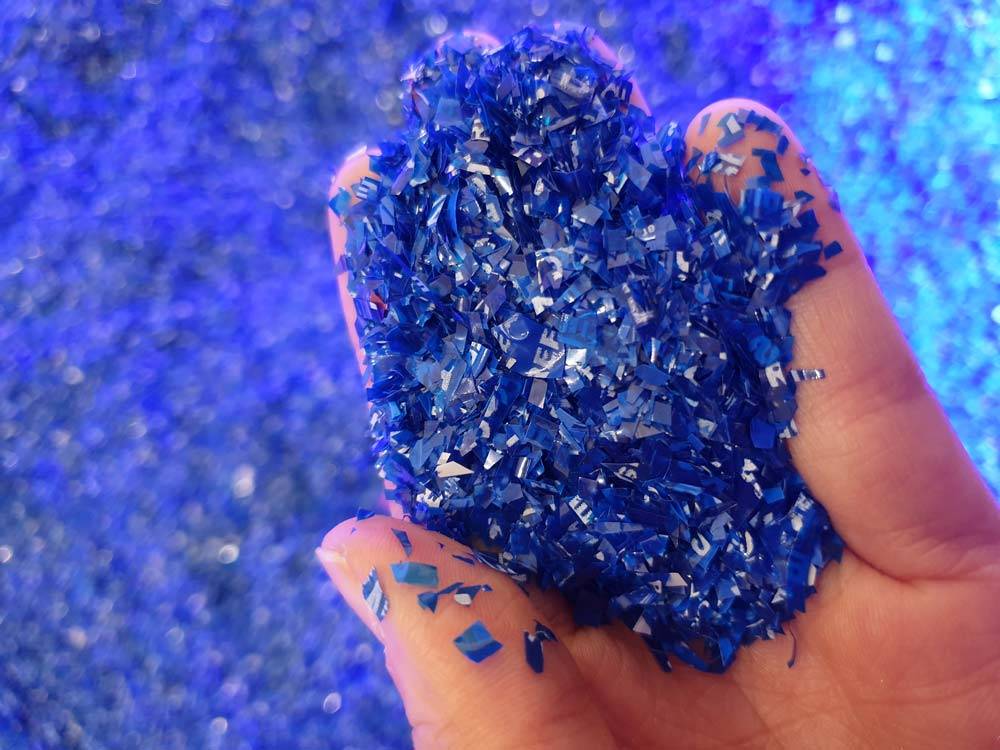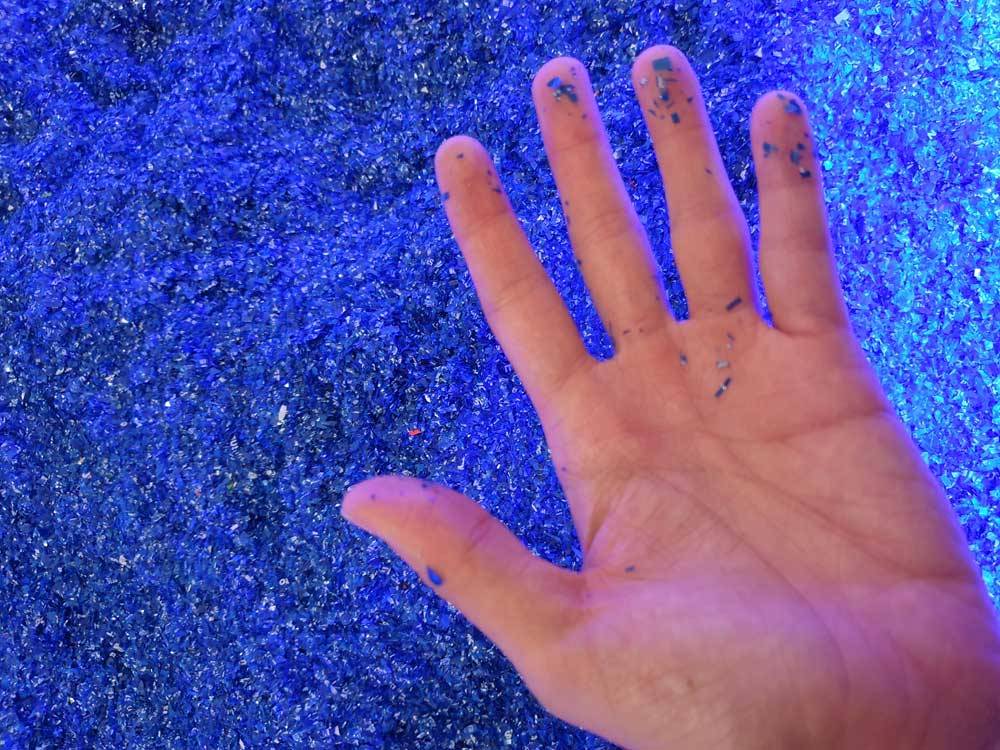
Outstretched before me lies a sapphire pool, accompanied by two watery towers of blue behind me. Sounds like a seaside getaway? As much as this is where we might all hope to be, where I am is no sunny beach, but Gajah Gallery. Here, a combination of three works by Filipina visual artist, Geraldine Javier, has been installed, and reality is no idyllic holiday.
What first catches my eye is the pool of crystal blue. One is immediately drawn to its glittering surface, as if it contains sapphire stones. The glow of Catch of The Day beckons you to take a closer look, when you realise that they are in fact far from precious gems. Curiosity gets the better of me as I reach my hand into the heap and feel the softness of but millions of finely cut plastic pieces.

What belies the pretty sight of this confetti is the ordinary waste that is the labels off our bottled mineral water – single-use plastics that we readily, frequently discard once they have outlived their purpose. Without thought of where they go or how they’re dealt with, the majority of us trust that with our advanced technologies and convictions about recycling, they are in a better place. I shrug off such thoughts, but like a stubborn reminder, bits of blue cling onto me. I fling and I flick, and I give up. These blue bits seem to say, “We’re here to stay, and the price is dear to pay.”

My interaction with Javier’s work continues as the twin paintings, Seascape (Blue Hour I & II), beckon. With elongated canvases reaching for the ground in their attempt to contain the spillage of colour, these paintings seem to continue the narrative of the irreversible – from the mounting collection of plastic waste to the uncontrollable spill-over effects that human actions have on the environment. That which appears at first glance to be expressionistic blotches of green, blue and white are revealed to be flowers and leaves. These refined and detailed images depict the beautiful, self-regenerating life forms in our natural world.

It is a dismaying moment to see the beauty beneath obscured and almost blotted out by the rain of acrylic blue that has frozen in motion. The paint adds a tactility to the works that also reads like scars and protrusions. In some parts of the paintings where the translucence of the blue paint reveals the imagery beneath, it feels as if nature itself were weeping, staining itself with tears that flow to no end – or at least it would seem so if one were not privy to the knowledge that acrylic paint dries rather quickly. But as they say, there is no crying over spilt milk, and I suppose this applies to spilt paint too.
This spillage is a reminder of the extensive environmental damage around the world, in the way that it alludes to the melting permafrost and surging temperatures induced by global warming. Climate change is not just a buzzword, but a global crisis that humans continue to fuel with our increasing carbon footprint. This is compounded by our unchecked disposal of waste that suffocate marine life and upset the ecosystem.

Javier’s works connect with me in powerful ways that go beyond the visual. They are thought-provoking messages of warning – warning about the future of Planet Earth, and warning, thus, about our future. While they first draw us in with their outward beauty, they rap on our conscience as we feel the weight of what they symbolise.











